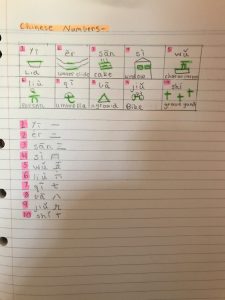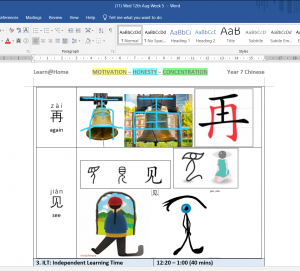Languages Update – Developing stronger learners
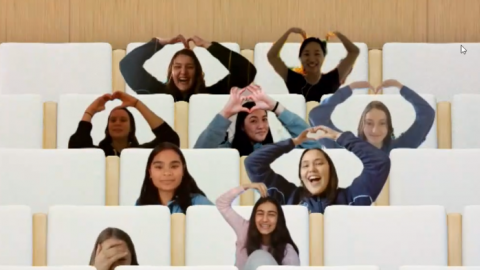
Without the immediacy of the teacher’s physical presence, Learning@Home challenges our students to be more independent learners. That means selecting instructional strategies which offer increased choice and encourage a more student directed approach. By ‘letting go of the reins’ students are discovering how capable they are, and that teacher dependence does not equate to successful learning. Many of the activities planned by teachers use the ‘Flipped Classroom’ approach whereby students undertake significant learning independently, with the teacher taking on a mentoring role, ‘walking with’ the student as she learns. While direct teacher instruction will always be essential to ensure students’ understanding and progress, it is great to ‘think outside the box’ during our Learn@Home time, to enhance student engagement, resilience and independence.
Thinking Outside the Box in Year 8 French
Flexible and Structure Language Learning
Remote learning has its challenges for learning a modern language: limited whole-class discussion and interaction as well as the inability for teachers to use facial expression and body language to assess the comprehension of students but remote learning also presents opportunities for flexible and scaffolded lessons. Using a variety of on-and-off-line strategies to foster engagement, St. Catherine’s girls of all different learning styles are able to participate in French lessons at home.
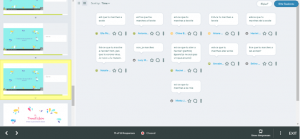 PearDeck is an online tool that integrates with PowerPoint presentations and provides students with different ways to interact with the lesson content such as choosing a multiple-choice answer, free typing responses and drawing on the slide. PearDeck also allows the teacher to display all students’ responses anonymously and collect data on comprehension after the lesson is complete. By contributing ideas anonymously (to their peers), learners who are less confident to speak aloud in a whole-class Teams call are able to demonstrate their learning, provide opinions and ask questions in a safe environment. As an added bonus, students are asked to select an emoji at the start of the lesson which informs the teacher of their current mood.
PearDeck is an online tool that integrates with PowerPoint presentations and provides students with different ways to interact with the lesson content such as choosing a multiple-choice answer, free typing responses and drawing on the slide. PearDeck also allows the teacher to display all students’ responses anonymously and collect data on comprehension after the lesson is complete. By contributing ideas anonymously (to their peers), learners who are less confident to speak aloud in a whole-class Teams call are able to demonstrate their learning, provide opinions and ask questions in a safe environment. As an added bonus, students are asked to select an emoji at the start of the lesson which informs the teacher of their current mood.
Sentence Builders are an example of a non-web-based tool that has proven to be successful in developing confidence in speaking and writing in grammatically accurate sentences. Year 7s and 8s have been using these documents, which are comprised of a table with columns that contain possibilities of language chunks, to respond to questions and communicate on a topic with a range of vocabulary. Beginning from the left-hand side and working their way towards the right, girls are able to build a variety of different sentences on the same topic. Each language chunk includes English translations, which support understanding, as well as some advanced structures with a highly communicative function (such as “selon moi” meaning “in my opinion”, or “je voudrais être plus…” meaning “I would like to be more…”). Although the focus is not on the grammatical explanation for these structures at this stage, once the girls become more comfortable using the phrases it will be easier for them to analyse the rules in later years. Using the Sentence Builder as a jumping off point, girls then participate in a variety of exercises in all four strands of language (listening, speaking, reading and writing) to recycle vocabulary and consolidate syntax. 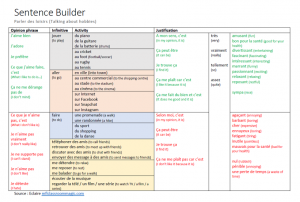
As we settle into the “new normal” of online and remote learning, it is comforting to observe girls who remain curious and resilient in their approach to learning French from home. St Catherine’s teachers continue to push them towards growth and development along their individual language-learning journey.
Ms Mackenzie Neale
Thinking Outside the Box in Chinese
We have to admit that learning and teaching at home is not the most ideal situation; however, challenges can also be opportunities. At St Catherine’s School we continue to create engaging and stimulating classes online for our students.
While we have all our attention on the computer screen, presenting information visually can be an effective and powerful way to enhance understanding. For character-based languages, images are helpful when learning vocabulary. The use of visual association supports student understanding and assists memory. Here are some examples from the Year 7 Chinese class.
Students use their creativity to practise the meaning of vocabulary through visual association.
Effective learning takes place when we communicate with others and exchange opinions. There are many 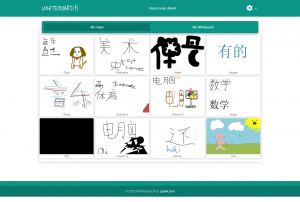 online tools allowing our students to collaborate their brilliant ideas with each other. This is an example of the Year 8 Chinese class sharing their “Character Pictures on school subjects” simultaneously with each other using an online whiteboard.
online tools allowing our students to collaborate their brilliant ideas with each other. This is an example of the Year 8 Chinese class sharing their “Character Pictures on school subjects” simultaneously with each other using an online whiteboard.
Ms Cindy Tian
Learn@Home has given us the opportunity to think outside the box. The strong emphasis on visual learning has allowed both teachers and students to explore new ways to develop skills and understanding. We are thankful for the new possibilities that technology presents. During this time at home, as a community, we have grown into stronger learners.


